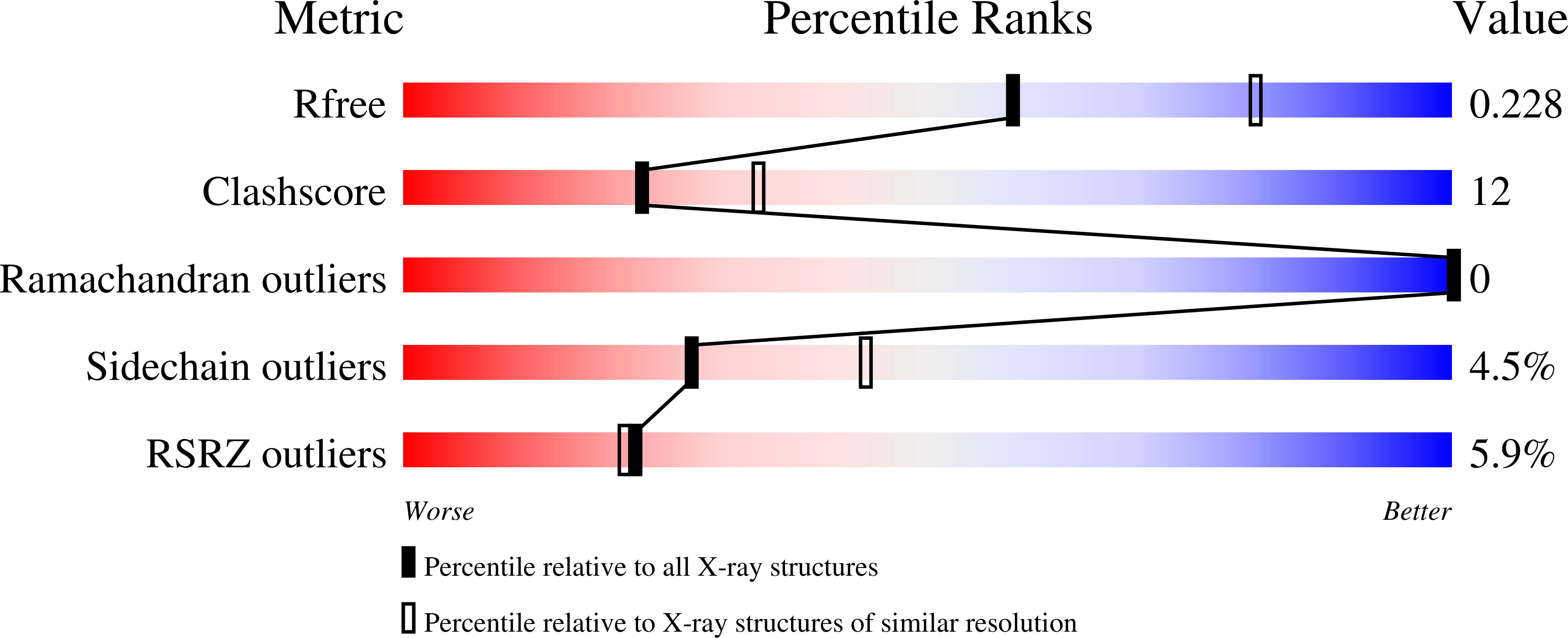Crystal structure determination and inhibition studies of a novel xylanase and alpha-amylase inhibitor protein (XAIP) from Scadoxus multiflorus.
Kumar, S., Singh, N., Sinha, M., Dube, D., Singh, S.B., Bhushan, A., Kaur, P., Srinivasan, A., Sharma, S., Singh, T.P.(2010) FEBS J 277: 2868-2882
- PubMed: 20528916
- DOI: https://doi.org/10.1111/j.1742-4658.2010.07703.x
- Primary Citation of Related Structures:
3HU7, 3M7S - PubMed Abstract:
A novel plant protein isolated from the underground bulbs of Scadoxus multiflorus, xylanase and alpha-amylase inhibitor protein (XAIP), inhibits two structurally and functionally unrelated enzymes: xylanase and alpha-amylase. The mature protein contains 272 amino acid residues which show sequence identities of 48% to the plant chitinase hevamine and 36% to xylanase inhibitor protein-I, a double-headed inhibitor of GH10 and GH11 xylanases. However, unlike hevamine, it is enzymatically inactive and, unlike xylanase inhibitor protein-I, it inhibits two functionally different classes of enzyme. The crystal structure of XAIP has been determined at 2.0 A resolution and refined to R(cryst) and R(free) factors of 15.2% and 18.6%, respectively. The polypeptide chain of XAIP adopts a modified triosephosphate isomerase barrel fold with eight beta-strands in the inner circle and nine alpha-helices forming the outer ring. The structure contains three cis peptide bonds: Gly33-Phe34, Tyr159-Pro160 and Trp253-Asp254. Although hevamine has a long accessible carbohydrate-binding channel, in XAIP this channel is almost completely filled with the side-chains of residues Phe13, Pro77, Lys78 and Trp253. Solution studies indicate that XAIP inhibits GH11 family xylanases and GH13 family alpha-amylases through two independent binding sites located on opposite surfaces of the protein. Comparison of the structure of XAIP with that of xylanase inhibitor protein-I, and docking studies, suggest that loops alpha3-beta4 and alpha4-beta5 may be involved in the binding of GH11 xylanase, and that helix alpha7 and loop beta6-alpha6 are suitable for the interaction with alpha-amylase.
Organizational Affiliation:
Department of Biophysics, All India Institute of Medical Sciences, New Delhi, India.


















